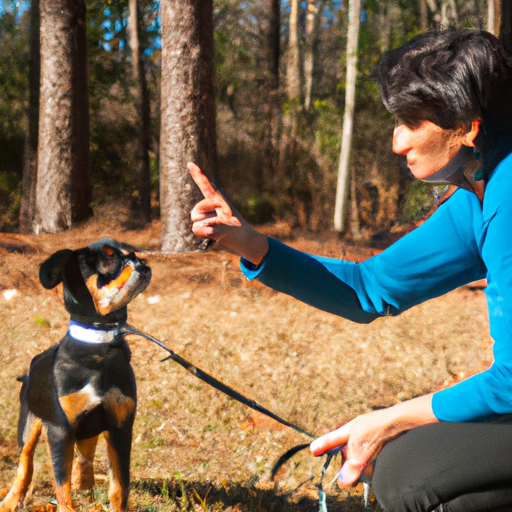Introduction
Training your dog is a fulfilling journey that strengthens your bond and enhances your pet’s overall behavior. Here, you’ll find an easy-to-follow guide on how to train your dog.
Understand Your Dog’s Behavior
Firstly, understand that your dog’s behavior is a product of their breed, environment, and experiences.
- Breed: Some breeds are more susceptible to certain behaviors. For instance, Retrievers love to fetch, while Terriers are more inclined to dig.
- Environment: Dogs are influenced by their surroundings. A dog that lives in an active household may be more energetic than a dog from a calmer environment.
- Experiences: Dogs learn from their experiences. A dog that has been rewarded for a behavior is likely to repeat it.
By understanding these factors, you can tailor your training methods to your dog’s specific needs.
Establish a Training Routine
Training should be a regular part of your dog’s life.
- Set aside dedicated training sessions each day.
- Keep sessions short (15-20 minutes) to prevent your dog from becoming overwhelmed.
- Use positive reinforcement such as treats, praise, or play to reward good behavior.
Teach Basic Commands
Start training your dog by teaching them basic commands. These include “Sit”, “Stay”, “Come”, and “Leave it”.
| Command | Steps |
|---|---|
| Sit | Hold a treat close to your dog’s nose and move your hand up, allowing their head to follow the treat and causing their bottom to lower. Once they’re in sitting position, say “Sit”, give them the treat and share affection. |
| Stay | Ask your dog to “Sit”. Then, open the palm of your hand in front of you, and say “Stay”. Take a few steps back. If they stay, give them the treat and some affection. Gradually increase the number of steps you take before giving the treat. |
| Come | Put a leash and collar on your dog. Go down to their level and say “Come” while gently pulling on the leash. When they come to you, reward them with affection and a treat. |
| Leave it | Place a treat in both hands. Show them one enclosed fist with the treat inside, and say, “Leave it.” Ignore the behaviors they throw at you to get the treat, and once they stop trying, give them the treat from the other hand. This teaches them that leaving things alone leads to even better rewards. |
Curb Bad Habits
To curb unwanted behaviors, redirect your dog’s attention to something more positive. For example, if they tend to chew on furniture, provide them with a chew toy instead. Remember, consistency is key.
Socialize Your Dog
Socialization exposes your dog to different environments, people, and other animals. This helps them become more comfortable in various situations and reduces their likelihood of becoming anxious or aggressive.
Enroll in Training Classes
Dog training classes provide professional guidance and socialization opportunities. They can be particularly beneficial for first-time dog owners or for those dealing with more challenging behaviors.
Consider Hiring a Professional Trainer
If you’re struggling with training, consider hiring a professional dog trainer. They have the skills and experience to help you navigate the training process and address more complex behavioral issues.
FAQ
1. When should I start training my dog?
You can start training your puppy as early as 7 to 8 weeks old. The earlier you start, the faster your dog will learn good habits.
2. How long does it take to train a dog?
The duration of training varies depending on the dog and the type of training. Basic obedience training can take a few weeks, but behavioral training can take several months or more.
3. What should I do if my dog is not responding to training?
If your dog isn’t responding to training, consider seeking help from a professional dog trainer. They can provide expert advice and help identify any potential issues that may be hindering your dog’s progress.
4. Can I train an older dog?
Yes, you can train an older dog. While it might take a little longer than a puppy, older dogs are capable of learning new commands and behaviors.
5. What should I do if my dog behaves aggressively during training?
If your dog shows signs of aggression, stop the training session and calm them down. It’s important not to punish your dog, as this can increase their aggression. Instead, consult a professional trainer or a behavioral veterinarian.
Training your dog requires patience and consistency. But with dedication, you’ll reap the rewards of a well-behaved, happy, and healthy pet. So, get started and enjoy the journey!



